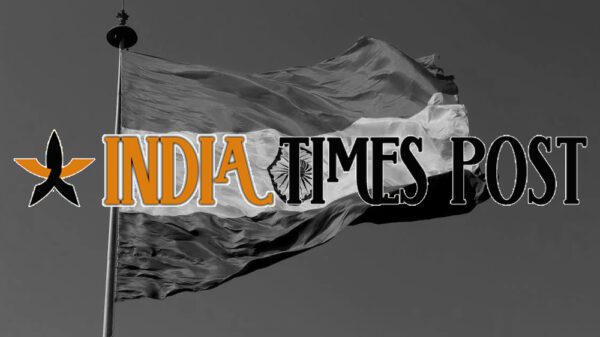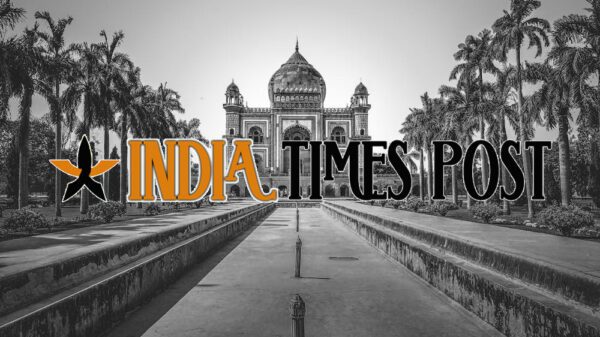Nagaur Fair, Nagaur
Essentially an animal fair, it provides an opportunity to participate in some of the local sports.
This eight days fair held every year during the month of Jan-Feb, is popularly known as the Cattle fair and is the second largest in Rajasthan. Nagaur Town is the most picturesque of Rajput townships.
Nagaur is a sea of animals, trading over 70,000 bullocks, camels and horses every year. The bullocks are known for their fleetness. Not only are the animals lavishly decorated, even their owners flaunt wearing colourful turbans and long moustaches.
Sports like tug-of-war, camel races, bullock races and cock fights; jugglers; puppeteers, story-tellers; and exciting campfire evenings are held to entertain the tourists. Folk music of the Jodhpur variation echoes the tranquil desert sand. Nagaur is well connected to the major cities by road and rail. Nearest airport is Jodhpur, some 135kms away.
Baneshwar Fair, Dungarpur
A religious festival with simple & traditional rituals. Quaint rhythms conjure up the tribal cultural identity of the Bhils of Rajasthan, Gujarat & M.P. Baneshwar means the master of the delta and this name was given to the Shiva linga.
The Baneshwar fair is held at a small delta formed by the river Som & Mahi & prayers are offered to Lord Shiva locally named as Baneshwar. The fair resounds with the gaeity of traditional folk songs, folk dances, Raslila, animal show, magic shows acrobatic feats. Adding to the excitement are me joy ride.” on merygo rounds & swings.
Banganga Fair
The Banganga Fair is held annually on the full moon day of Vaishakh (April-May) near a rivulet 11 kms from the historical township of Bairath in Jaipur district. The stream is believed to have been created by Arjun, one of the Pandavas.
Visiting the Banganga Fair, taking a bath and paying homage to the holy sites in the vicinity at this time is therefore considered very auspicious by the pilgrims who come from Alwar, Behror, Jaipur, Bharatpur and many other places.
Apart from those who come to the fair for pilgrimage, traders of different communities arrive at the fair to sell their wares. The articles sold range from simple rural ornaments to toys and household items. The buying and selling adds to the atmosphere and to the hustle and bustle of the fair. Giant wheels and merry-go-rounds thrill the children as well as the grown-ups.
Devotees gather at the Shri Radha Krishnaji’s temple in the morning, they take a bath at the ghats (a flight of steps leading to the water) of the Banganga river with the belief that it has powers to purify the soul. The people then proceed to the nearby shrines of Hanuman and Ganga Bihari and also visit the Shiva temple and the Math of Goswamiji.
Bairath is 85 kms from Jaipur on a diversion from National Highway No. 8 near Shahpura which connects Alwar. There is a regular bus service between Jaipur and Maid (from where Banganga is only a couple of kilometres away).
Gangaur Festival, Jaipur
A festival devoted to Goddess Parvati, the consort of Lord Shiva. Ishar & Gangaur are the divine male and female ho embody marital love. Dedicated to goddess Gauri (Parvati), the festival commences on Holi. Young girls pray for grooms of their choice while married women seek a long life for their husbands. The ladies decorate their hands and feet by drawing designs with Mehendi (Myrtle Jaste).
On the evening of the 7th day after -ioli, unmarried girls go around singing songs of ghudlia (earthern pots with numerous holes all around with a lamp lit aside) carrying the pots on their hands. )n their way they collect small presents ,cash, sweets, jaggery, ghee, oil etc. The women do these while chanting hymns to the Goddess.
Festivities continue for 18 days culminating with the arrival of Lord Shiva to escort his bride home. A grand process Ion with the ideal of Gauri in beautifully decorated gold and silver a palanquin caparisoned elephants, camels, horses, dances, drummers & joyous children, goes through the city streets. In Jaipur procession forms at the Palace Gate known as Tripolia and moves on the city streets on to Talkatora.
A vast gathering of Jaipurites & villagers from nearby areas witness the procession. A sweet dish called Ghewar characteristic of the Gangaur festival is distributed among friends & relatives. In Jodhpur early in the morning thousands of maidens, clad in their best attire, singing melodious songs, bring water and durba grass in silver or brass pots to a place known as Girdikot.
Brij Festival
The Brij Festival takes place a few days before Holi, (the festival of colours) in the month of March. Held in honour of Lord Krishna, this festival is marked by verve and zest. Villagers, in gay, multihued attire, can be seen singing and performing the Raslila dance (dance depicting the immortal love-story of Radha and Krishna).
All of Bharatpur echoes the sound of folk melodies on this festival held on the eve of Holi. Men and women, young and old, rich and poor-all are touched by the spirit of this festival. Boisterous revellers spare no one during this festival and delight in splashing colour on everyone around.
Bharatpur is situated on the Delhi – Mumbai main railway line and also on National Highway no. 11 (Bikaner – Agra). Agra being the nearest Airport (56 kms.)
Camel Festival
A lively and colourful event, the Camel Festival is organised by the Department of Tourism, Art & Culture, Rajasthan in Bikaner every year. January is just the right month for a desert spree, and Bikaner just the right place to see the Ships of the Desert. In the camel country Bikaner, these desert leviathans pull heavy cart loads, transport grain and even work at the wells.
The Camel Festival begins with a colourful procession of bedecked camels against the red sandstone backdrop of the Junagarh Fort, the festivity advances to the open sand-spreads of the grounds, followed by the best breed competition, the tug-of-war contest, camel dance and acrobatics, etc.
The camels display amazing footwork, dancing gracefully to the slightest direction of their trainers. Bridal, bridles, bejewelled necks, jingling anklets and long, lanky camel shadows on dusky sands cast a magical spell. Hundreds of tourists and thousands of locals and dignitaries revel in this man-and-animal affair organised especially for the tourists.
The evenings close with a different tenor and tempo altogether: a traditional rendezvous of renowned artistes of Rajasthan and the local folk performers.
The jubilant skirt-swirling dancers, the awe inspiring fire dance, and the dazzling fireworks light up the fortified desert city of Bikaner.
Bikaner is connected by rail and road with all the major cities. The nearest airport is at Jodhpur (243 kms.).
Desert Festival
Once a year in winters and on the middle of the continually rising and falling stark yellow sands of the great Thar Desert, the empty sands around Jaisalmer come alive with the brilliant colour, music and laughter of the Desert Festival. The festival is organised by the tourist authorities as tourist entertainment around January-February.
The very rich and colourful Rajasthani folk culture is on show here for a few days. Rajasthani men and tall beautiful women dressed in their brightly costumes dance and sing lingering ballads of valour, romance and tragedy. Traditional musicians attempt to outdo each other in their musical superiority.
Ganesh Chaturthi
Ganesh Chaturthi marks the birth of Lord Ganesha and is celebrated all over the country. This is also symbolic of the advent of all festivals dedicated to other Indian Gods.
The temple dedicated to Lord Ganesha is located in the fort of Ranthambhor, about 12 kms from Sawai Madhopur and it is one of the most important Ganesha temples in the State. There is always a lot of activity at the temple because people believe that the first invitation to a marriage should be sent to Lord Ganesha.
This temple is the site for Ganesh Chaturthi celebrations attracting devotees from all over to join in the singing of devotional songs. The Orange color in which the idol is painted as well is the holy colour for this festival. The idol is lavishly decorated with golden ornaments and every day felicities with huge garlands of marigold. There are markets around the temple attracting the tourists and visitors.
It is preferable to approach Ranthambhor from Sawai Madhopur, which lies on the main Delhi-Mumbai railway line and is also connected to Jaipur by rail. A road link with Jaipur exists as well.
Kaila Devi Fair
The annual fair of Kaila Devi, (Mahalakshmi or the goddess of wealth), is held at the village Kaila (24 kms to the south west) in Karauli district in the month of Chaitra (Mar-Apr), lasting for a fortnight. The temple of Kaila Devi is located on the banks of the Kalisil river in the hills of Trikut, 2 Kms. to the north-west of Kaila village. Another attraction is the small temple dedicated to Bhairon, situated in the courtyard and facing the shrine of Kaila Devi is a temple of Hanuman locally called ‘Languriya’.
Approximately 2 lakh devotees gather during the fair. The ritual of Kanak-Dandotis is observed by staunch devotees. They cover a distance of 15 to 20 Kms to reach the temple, not on foot but by lying prostrate, making lines with their hands in that position, advancing up to the line drawn and repeating this procedure till they reach the temple.
While some eat food and take rest during the journey, others endure the rigours of the ritual without these.
Groups of Mina tribesmen arrive in a spirit of gaiety dancing, singing and creating a lively atmosphere. The spacious courtyard becomes the venue for dances and songs sung in praise of the guardian deity.
The nearest rail-head is Hindaun at a distance of about 48 Kms. Shri Mahavirji is another rail-head of the Western Railway near Kaila. The site is approachable by well maintained roads from Karauli, Hindaun and Mahavirji. During the fair, the State Transport as well as private operators provide bus services keeping in mind the huge inflow of pilgrims.
Urs Ajmer Sharif
The urs, acommomerative celebration is held in the solemn memory of Khwaja Muin-nddin Chisti, a prighly respected sufi saint fondly revered as the benefactor of the poor, popularly known as Gareeb Nawaz. The Dargah Sharif in Ajmer, is the place where the Saints mortal remains lie burried and is the site of the largest Muslim Fair in India.
Chadar; Ghilaph & Neema which are votive offerings for the tomb are offered by several hundred thousand devotees. Mehfils & Qawwalis are held and mass prayer calls for the eternal peace of the mankind. An interesting ritual is the looting of Kheer (Milk Pudding) which is cooked in two large cauldrons called Degs and distributed to the devotees as tabarruk (blessed food).
The lakeside city of Ajmer is located in central Rajasthan, and is held in great reverence by devotees of all communities who call it ‘Ajmer Sharif’ (Holy Ajmer). It is here that the mortal remains of the highly respected Sufi saint Khwaja Moin-ud-din Chishti lie buried.
The Khwaja came from Persia and established the Chishtia order of fakirs in India. He is popularly known as Gharib Nawaz (protector of the poor) because he dedicated his entire life to the service of mankind. His spartan life spanned almost a hundred years and he embraced death in solitude while he had withdrawn to his cell for six days, asking not to be disturbed
Teej Festival
Teej is the festival of swings. It marks the advent of the monsoon month of Shravan (August). The monsoon rains fall on the parched land and the pleasing scent of the wet soil rises into the air. Swings are hung from trees and decorated with flowers. Young girls and women dressed in green clothes sing songs in celebration of the advent of the monsoon.
This festival is dedicated to the Goddess Parvati, commemorating her union with Lord Shiva. Goddess Parvati is worshipped by seekers of conjugal bliss and happiness. An elaborate procession is taken out in Jaipur for two consecutive days on the festive occasion which is watched by people in large numbers.
Pushkar Fair
Excitement, gaiety and a keen sense of competition fill the air as the long journey to Pushkar begins. The only temple dedicated to Lord Brahma (the creator) is located at Pushkar. The Pushkar lake is surrounded by 52 flights of steps called ghats.
Legend has it that Lord Vishnu appeared at the Varah ghat in the form of a boar. Brahma took a bath here and performed yagna at the Brahma Ghat accompanied by Vishnu & Mahadev. The ashes of Mahatma Gandhi (Father of the Nation) were immersed at the Gandhi ghat.
Pushkar is among the five principal places of Hindu pilgrimage. People consider the water of the Pushkar lake to be very sacred and the ritual of taking dips in the holy water is believed to bestow salvation. It is customary to float lighted eastern lamps on pattals (plates made of leaves) on the waters of lake.
This creates a spectacular view when the sacred lake takes on a mystical tint sprankled with twinkling spots of light. In conjunction with he religious fair, a cattle fair is also organised. The ancient town of Pushkar is transformed into a spectacular fair ground.
The fair grounds reverberate with festivity and woman folk shop for bangles, clothes, utensils, sundry household items & leather goods. The highlight of the Pushkar fair is the trading in camels. The camel, horse & donkey races are events that draw huge attendance.
Body tatooing is yet another favourite activity. Come dusk, and the rich strains of haunting music are carried across the desert sands as the merrymaking continues deep into the night.
Shekhawati Fair
The Shekhawati Festival held on 10th and 11th February every year is organised jointly by the State Department of Tourism, District administrations of Sikar, Jhunjhunu and Churu.
Shekhawati, already famous for its frescoes, is fast becoming a rural tourism destination too. Travelling on horse back, the tourists get a closer view of the countryside and the people. And they return with an indelible imprint of not only the friendliness of the people but also of the agricultural revolution sweeping the villages — the region now exports 80 per cent of its crops whereas only a few years ago it could meet only 10 per cent of its requirement through local production.
For a broad-based discovery of Shekhawati’s culture, the festival is spread over a number of venues – Nawalgarh, Sikar, Jhunjhunu and Churu. The programmes include a one day tour of the region, camel and jeep safaris, farm visits, rural games, cultural programmes, haveli competitions and fireworks.
Nawalgarh is the central venue of the festival and can be reached comfortably by train and road from Jaipur (140 kms by Road). Nawalgarh also has some of the finest frescoes of Shekhawati. The Clock Tower is a famous landmark and the Roop Niwas Palace hotel occupies a place of pride in the town.
India Travel » Festivals of India › India Travel Tips › Popular Places in India › Popular Monuments in India › Hill Stations in India › Beaches in India › Wildllife Sanctuaries in India




